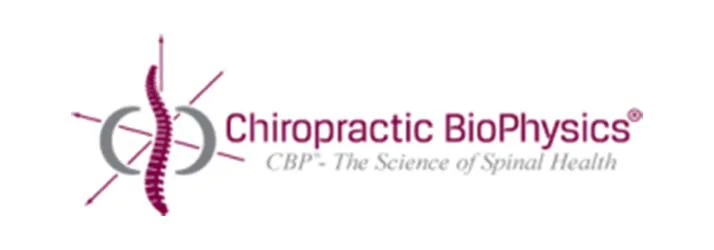Chiropractic Biophysics® Research in Austin TX
Chiropractic Biophysics® Research in Austin TX

Chiropractic BioPhysics® or CBP® is a leading chiropractic technique, producing exceptional breakthrough results for patients worldwide.
It is the most researched, published, results-oriented, and effective chiropractic technique in Austin TX. CBP® encompasses spinal rehabilitation and postural correction as means to address not just pain, but disease and organ dysfunction. It combines standard chiropractic spinal adjustments with mirror image® (opposite position) postural adjustments, mirror image® spinal/postural exercise, and mirror-image® traction to provide more permanent relief and improved health for patients through the spine and postural correction. There have been 240+ articles published in over 36 journals since the initial development of CBP® in 1980 by Don Harrison, DC, Ph.D. This work continues under the leadership of his son, Deed Harrison, DC who has authored approximately 100 peer-reviewed spine-related publications, 4 spine textbooks, and numerous conference proceedings. Dr. Harrison is a manuscript reviewer for several peer-reviewed Spine journals including Spine, Clinical Biomechanics, Clinical Anatomy, Archives of Physical Medicine & Rehabilitation, the European Spine Journal, BMC Complementary Alternative Medicine, and BMC Musculo-Skeletal Disorders.
Austin TX Chirorpactor shares Recent Research published:
Gait & Posture, March 2020, Ibrahim Mustafa, and Deed Harrison
Is forward head posture relevant to autonomic nervous system function and cervical sensorimotor control?
Forward head posture negatively affects cervical sensorimotor control. Forward head posture negatively affects the autonomic nervous system. There is a strong correlation between the CVA and cervical sensorimotor outcomes. There is a strong correlation between the CVA and skin sympathetic outcomes.
Conclusions: Participants with FHP exhibited abnormal sensorimotor control and autonomic nervous system dysfunction compared to those with normal head alignment.
Brain Circulation, Jan-Mar 2019, Katz, Fedorchuk, Lightstone, Banach, Podoll
Increase in cerebral blood flow indicated by increased cerebral arterial area and pixel intensity on brain magnetic resonance angiogram following correction of cervical lordosis.
Results
Still, MRA images were analyzed using FIJI/Image and their pixel intensities representing the fold change in measured blood flow were quantified. Pixel intensities for each image following the cervical curve correction (using the Denneroll) were normalized to the image taken before the adjustment to calculate the percentage or fold change in pixel intensity. In each case, an increase in pixel intensity was observed ranging from 23.0% to 225.9%. The observed increase was statistically significant within the population tested. These data indicate that correction of cervical lordosis may result in an immediate increase in the amount of CBF of the brain.
Annals Of Vertebral Subluxation Research, March 10, 2018, Paul A. Oakley D.C. & Deed E. Harrison, D.C.
Radiogenic Cancer Risks from Chiropractic X-rays are Zero: 10 Reasons to Take Routine Radiographs in Clinical Practice
Background: Extremely restrictive radiology guidelines have recently been adopted within the chiropractic profession that pose a public health threat. Risk assessment from exposure to radiation from diagnostic x-rays is based on the linear no-threshold (LNT) model/hypothesis that has been disproved for use in risk estimates in the low-dose range, i.e. less than 100mGy (10,000 mrem).
Discussion: We discuss ten reasons why routine radiography should be the standard in chiropractic practice including it offers zero harm to the patient; contemporary evidence-based methods require it, these methods lead to better outcomes; incidental findings are important; it increases patient satisfaction; it completes a thorough exam; it satisfies practitioner medico-legal liability concerns; its costs are minimal; alternative methods (i.e. MRI) are not practical for daily practice and are typically performed in the nonphysiologic recumbent position and do not convey appropriate biomechanical information; finally, it may enhance patient health by hormesis.
Conclusion: As opposed to current x-ray reduction efforts and traditional beliefs, the weight of the current evidence substantiates two facts:
- X-rays are not harmful to patients;
- X-rays should be a routine part of the comprehensive spinal assessment in order to deliver optimal and contemporary chiropractic care
Note: There is a strong push in chiropractic (apparently lead by the ACA) to restrict our ability to use x-ray. Data supports that the true health risk of ionizing radiation is zero. There is actually evidence that ionizing radiation may actually stimulate your immune system and be good for you.
The New York Times, January 14, 2020, By Mary Chris Jaklevic | Kaiser Health News
That Lead Apron in the X-Ray Room? You May Not Need It.
A number of radiology organizations are trying to end the decades-old practice of shielding patients from radiation with lead aprons. The amount of radiation needed for an X-ray is about one-twentieth of what it was in the 1950s, and scientists have found no measurable harm to ovaries and testicles of patients from radiation exposure that comes from diagnostic imaging after decades of looking at data. “What we know now is that there is likely no risk at all,” said Dr. Donald Frush, a radiologist at Lucile Packard Children’s Hospital Stanford in Palo Alto, Calif., who chairs the Image Gently Alliance, referring to hereditary risk.
J Manipulative Physiol Therapeutics, 2005 Mar-Apr
Determining the relationship between cervical lordosis and neck complaints
In two separate cervical spine investigations, McAviney and colleagues and Harrison et al. compared the cervical lordosis in chronic neck pain populations to that in healthy participants without a history of neck pain or cervical spine trauma.
- Statistically, persons whose cervical spine curves were below 20° were twice as likely to be in the chronic neck pain group. This finding was not age or gender-dependent strengthening these findings.
- Participants with a straightened or reversed cervical curvatures were 18 TIMES more likely to be in the chronic neck pain group as compared to the non-pain group.5
- Thus, a cervical lordosis less than 20° can be considered a type of cervical spine subluxation.
Archives of Physical Medicine and Rehabilitation, July 2016, Moustafa IM, Diab AA, Taha, S, Harrison DE
The addition of a sagittal cervical posture corrective orthotic device to a multimodal rehabilitation program improves short and long-term outcomes in patients with discogenic cervical radiculopathy.
Clinical features: The study investigated 72 patients (47 males) aged 40-55 years with chronic pain and disability with a primary complaint and diagnosis of cervico-genic dizziness. The short (10-weeks) and long term (1-year) outcomes of neck pain, dizziness severity and frequency, and cervical positioning sense were assessed in the project.
Interventions: The investigation used a standard intervention frequency and duration of 3x per week for 10 weeks or 30 total treatment sessions. Patient participants were assigned equally to one of two groups: Denneroll group and Non-Denneroll Group.
Of interest, both groups received a standardized multiple treatment procedure protocols including:
- Cervical Spinal joint mobilization therapy for the cervical spine
- Myofascial stretching and release techniques to the sub-occipital spine
- Tens and hot packs to the cervical region
- Functional and strengthening exercise protocol designed to improve strength, flexibility, posture, and reduce pain,
- A series of home care instructions
All treatments were applied 3x per week for 10 weeks. At the end of the 30 treatments, following a minimum of 1-day with no treatment, all subjects were re-evaluated. Lastly, treatment was then stopped and all subjects were followed for an additional 1-year to see if the 10-week outcomes were maintained at this long-term follow-up.
Important Findings and Conclusion: The addition of the cervical Denneroll orthotic device to a multi-modal physical therapy intervention program was found to improve the cervical lordotic curvature by an average of 14° and improve anterior head translation by 2.4 cm. This improvement in cervical curvature and posture in the Denneroll group was found to be associated with improvement in dizziness disability and severity and frequency, chronic neck pain, and head repositioning accuracy. In the group receiving the Denneroll and consequent curve correction, their results were maintained at 1-year follow up whereas the control subjects regressed back to baseline values for all clinically relevant measures.
Note: There are multiple published randomized trials with long-term follow-up (1-2 years) indicating that the Denneroll can improve the cervical lordosis in a 10-week program. The correction averages 12-15 degrees of curvature and a 10-25 mm reduction in forward head posture. Simultaneously with curve and posture improvement, the Denneroll shows greater results in chronic pain, disability, range of motion, functional measures, and neurological outcomes.
In 2004 the International Society on Scoliosis Orthopedic and Rehabilitation Treatment (SOSORT) was formed to bring about advances in research and treatments in non-surgical treatment methods for scoliosis and spine deformities. SOSORT meets annually and consists of medical doctors, orthotist, physical therapists,s and chiropractors. In 2017 at the SOSORT annual convention in Lyon, France it was voted to allow chiropractors on the SOSORT executive committee. In 2020 the SOSORT annual convention will be held in Melborne, Australia, and will be part of Spine week. The host for the 2020 SOSORT annual meeting is chiropractor and founder of Scolibrace, Dr. Jeb McAviney.
The ICA is in the process of establishing a CBP diplomate. CBP is the only technique to have diplomate status, and the ICA is doing this as a result of the enormous body of published research. The diplomate program will be 420 hours over a 5-year window. 240 hours are research/reading on your own.
Lastly, this is a case study presented by Dr. Carol Ouellette from Canada at the CBP Annual in October 2019. The last x-ray is after being out of the Scolibrace for 5 months. She is age 2 and scoliosis-free. The brace was worn average of 8 hours/day for 11 months.
Monday
9:00am - 1:00pm
3:00pm - 6:00pm
Tuesday
9:00am - 1:00pm
Wednesday
9:00am - 1:00pm
3:00pm - 6:00pm
Thursday
9:00am - 1:00pm
Friday
Closed
Saturday & Sunday
Closed
Chiropractic Arts Center of Austin, P.C.
4131 Spicewood Springs Rd L-3
Austin, TX 78759



